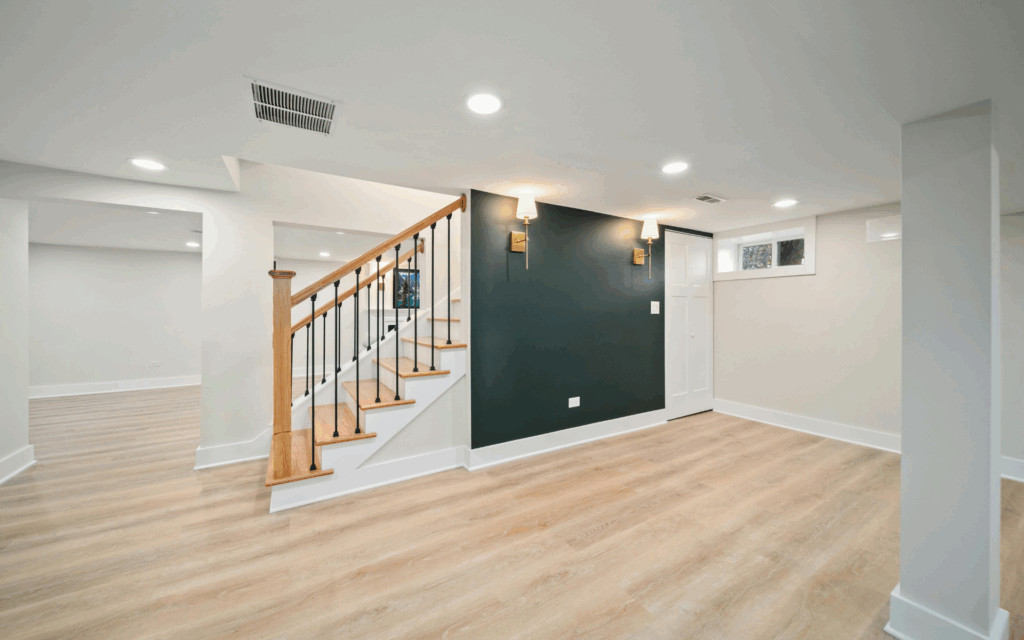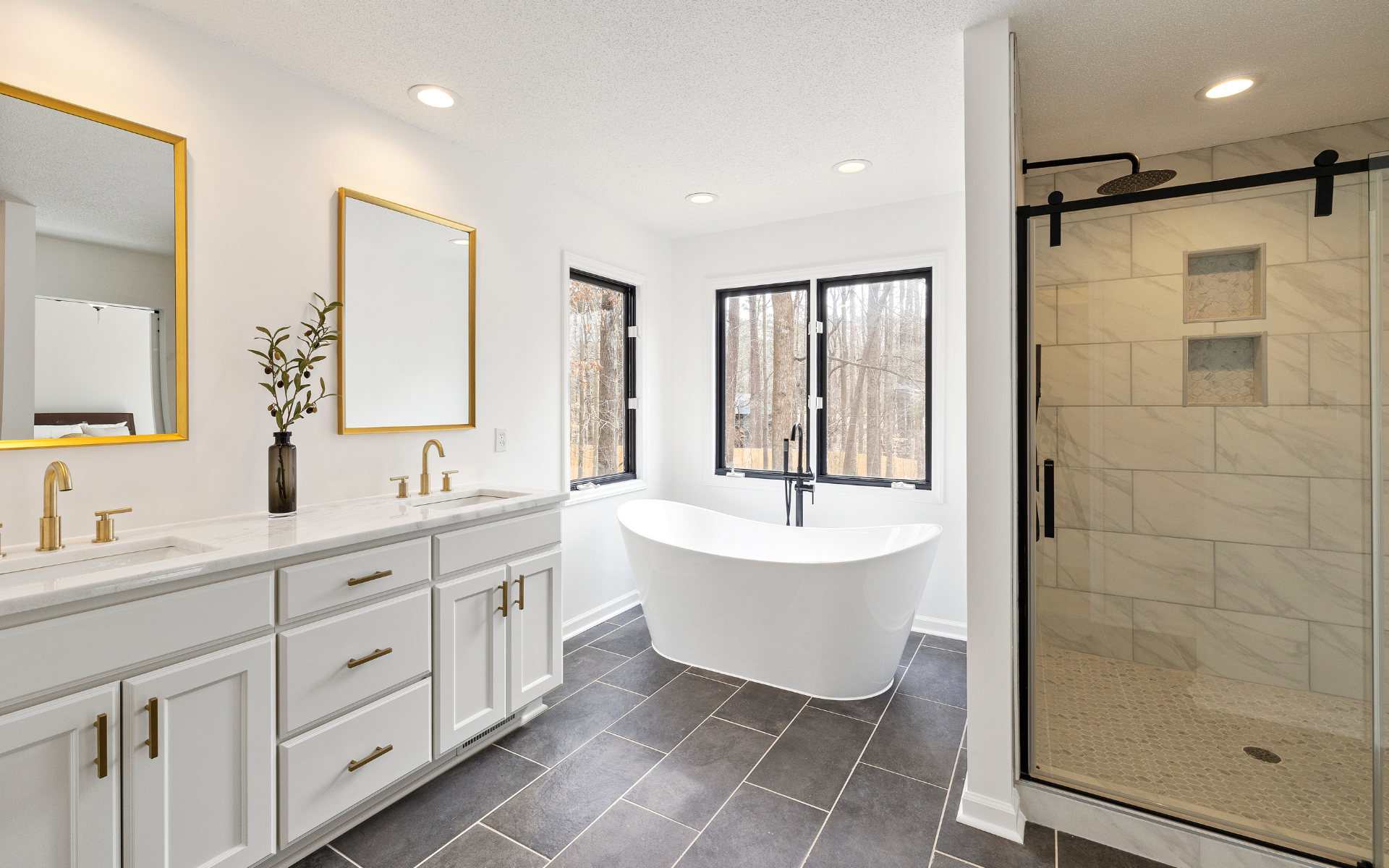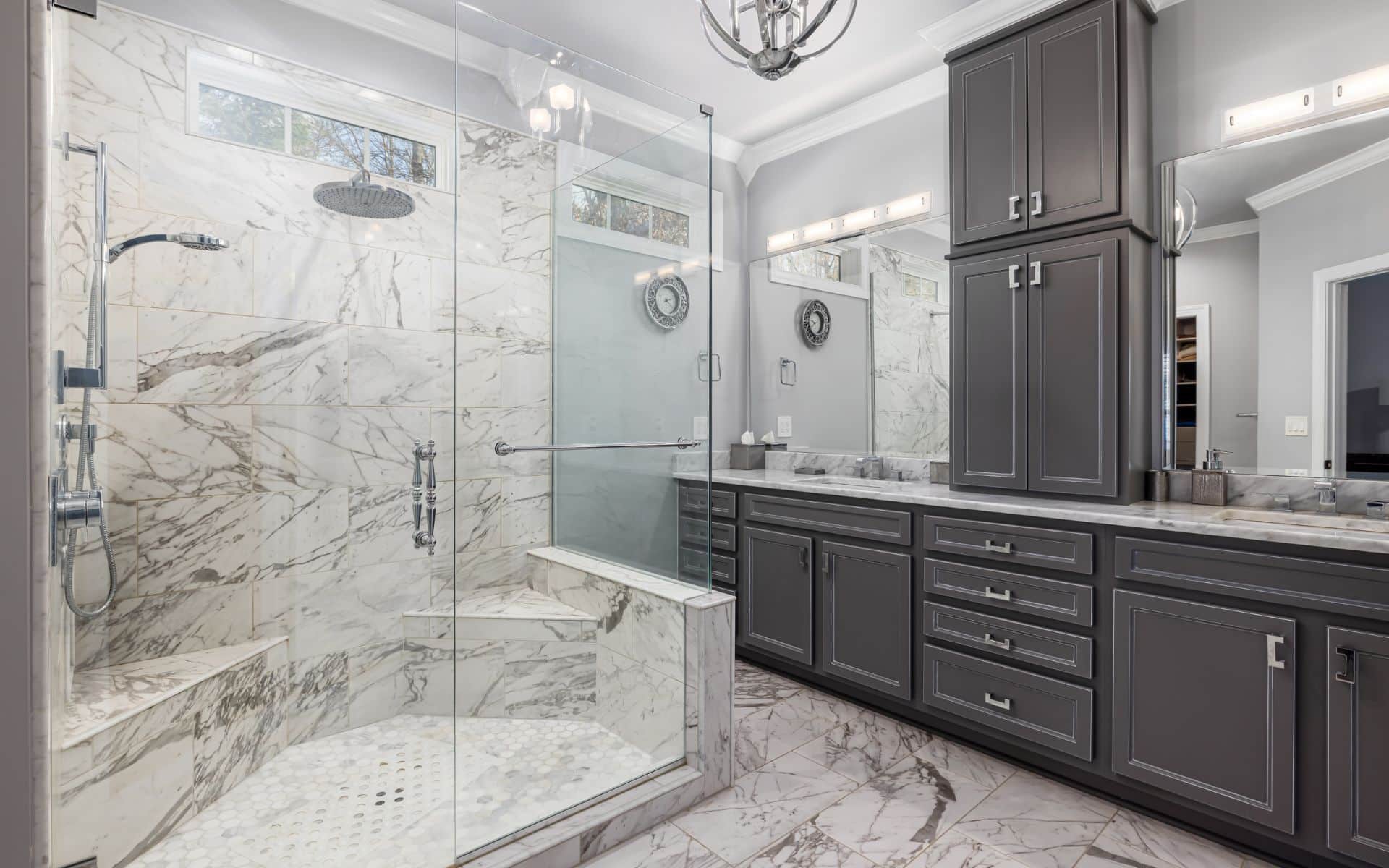Basements are usually the most neglected area in our home. This area is also where we put all of the stuff that we are not using anymore. But if your family needs additional space for various reasons, this is the best time when this ignored area will shine and have its moment. A well-executed basement remodeling process turns your underutilized area into a functional room. Either DIYing using BEST BASEMENT REMODELS or hiring BASEMENT REMODELING SERVICES can make this project more manageable.
Just like kitchen and bath projects, converting your basement requires following the right steps to ensure your mission succeeds. One of its challenges includes the existing fixtures like electric wires, water pipes, and gas lines that can obstruct making the basement look better. Among these challenges, this article will provide you with essential steps to ensure the success of REMODELING A BASEMENT.
Steps for a Successful Basement Remodeling Process
1. Decide what the purpose of remodeling will be
Before starting any basement remodeling process, determine exactly how you want to use the space. Will it be for your children’s playroom, office, a hangout place for friends, or any of these combinations? Having a clear objective guides every decision throughout your basement renovation.
Consider these popular options for your finished basement:
Family Room or Entertainment Space – Create a comfortable area for family gatherings, movie nights, and entertaining friends
Home Office or Study – Design a quiet workspace with proper lighting and electrical outlets for productivity
Guest Suite or Bedroom – Add a private retreat for visitors with proper egress windows and ventilation
Home Gym or Exercise Area – Install durable flooring and adequate ventilation for fitness activities
Craft Room or Workshop – Include specialized storage solutions and task lighting for hobbies and projects
Home Theater – Plan for specialized lighting, sound systems, and comfortable seating arrangements
Wine Cellar or Storage – Design climate-controlled storage for collections or household items
Your intended use affects everything from the basement layout to electrical requirements and storage space needs. A home theater requires different considerations than a guest room or family room. Contact a professional remodeler to help clarify your vision and suggest better ways to maximize your basement’s potential.
2. Plan out your preferred design and layout
Once you know the purpose, work out the design for your finished basement. You have to make sure that it will not cause you unnecessary work or mistakes that can cause you additional hassle in the next months. Ensure your basement layout provides good traffic flow.
Consider waterproofing and insulating features in creating the style and design for your renovated basement. Think about where you need electrical outlets, light fixtures, and accent lighting. Plan for storage solutions and any special features like a wet bar, entertainment center, or built-in seating. If you lack design experience, work alongside a professional contractor who can guide you through planning and designing your basement renovation to avoid costly mistakes later.
3. Check if there are required building permits and local codes
Just like any major home improvement project, your basement remodeling process requires compliance with local building codes and permits. Research specific requirements for ceiling height, basement dimensions, egress windows, and fire safety standards in your area.
Building codes typically specify minimum ceiling heights (usually 7 feet for living space), required number of exit points, and electrical systems requirements. Check if your preferred design meets these standards, and modify your plans if needed to ensure compliance.
Apply for necessary permits once you finalize your design and ensure it meets all local codes. Having proper permits protects you during resale and ensures your remodeled basement adds legitimate value to your home.
4. Clean out the area
Before making that construction and design a reality, another essential thing is to clean out the whole basement. Remove all stored items, boxes, unused furniture, and debris from the area. Clean away anything that could interfere with construction work.
A clean workspace allows contractors to work efficiently and helps you accurately assess the basement walls, basement floor, and ceiling joists for any issues that need addressing. Take this opportunity to sort through stored items and decide what to keep, donate, or discard.
Cleaning also reveals any hidden problems like pest issues, structural concerns, or moisture problems that need attention before finishing work begins.
5. Conduct a moisture test in the area
One of the most critical steps in any basement remodeling process involves checking for moisture issues. Basements are prone to water problems that can damage your investment if not properly addressed before renovation begins. Renovating this area is an excellent opportunity to fix those water problems.
Check for signs of dampness, water stains, mold growth, or active leaks in the basement walls and the basement floor. Identify the source of moisture problems, whether from wet soil, inadequate drainage, foundation cracks, or poor waterproofing.
Also, you can do the following quick ways to waterproof your basement:
Ensure to redirect the downspout away from the basement foundation
Downgrade the slope of the lawn to drain the water from the basement
Consider a waterproof coating and painting on the interior walls of the basement
Put some additional drains that can lead to a storm drain
Once the fixations are done, conduct another moisture test to confirm if you have fixed the leakage problems. Again, you will need a professional leakage expert to check these.
6. Gather the tools and materials needed
The tools and materials needed for your basement remodeling process depend on your project scope and desired finishes. Common tools include circular saws, hammers, drills, masonry drill bits, utility knives, and measuring equipment for accurate basement layout work.
Measure your basement dimensions carefully to determine material quantities. Calculate how much lumber you need for wall framing, drywall sheets for walls and ceiling, insulation boards or fiberglass batting, and flooring materials.
Don’t forget safety equipment including safety glasses, dust masks, and work gloves. Consider renting specialized tools rather than purchasing them to save money on your project.
7. Install proper insulation throughout
Besides leakages, insulation is another essential factor to check and ensure to have, especially if the basement is never used. It is crucial because, aside from maintaining the cool temperature inside, better insulation prevents the formation of condensation in the basement’s interior walls. Proper insulation can separate the warm air from the area from the coolness of the walls.
Install insulation boards against concrete basement walls or use polystyrene insulation for moisture resistance. Add fiberglass batting between wall studs and ensure ceiling areas are properly insulated to separate warm air from cool concrete surfaces.
Good insulation improves energy efficiency, reduces heating and cooling costs, and creates a more comfortable environment in your additional living space.
8. Put some air circulation features
During your basement remodeling process, consider air circulation throughout the space. Basements often lack adequate natural ventilation, so plan for proper airflow to maintain air quality and comfort.
Add windows or expand existing ones if possible to improve natural light and ventilation. Install exhaust fans in areas like bathrooms or utility rooms. Consider extending your home’s HVAC system to include the basement or installing separate heating and cooling units.
Install carbon monoxide detectors and smoke detectors as required by local codes. Good ventilation prevents moisture buildup and ensures your functional space remains healthy and comfortable.
9. Complete with lighting and furniture
Basement spaces typically need extra attention to lighting due to limited natural light. Nothing is more excellent than that which comes from natural sources, and you can maximize it by putting new windows or expanding the existing ones. Artificial lights still never fail to give your remodeled basement the light that it needs by putting some in creative and practical ways. Install a combination of overhead fixtures, accent lighting, and task lighting to create a bright, welcoming environment.
The furniture can also affect not just the spacing but also the lighting that comes in and out of the basement. It can also block the natural air, creating a more comfortable and relaxing ambiance in the basement. Consider built-in storage solutions and entertainment features that make your dream space both functional and enjoyable.
How to Finish the Basement Project
Here’s how to tackle the major components that transform your basement into usable space:
Wall Construction
Frame your interior walls using pressure-treated lumber for any wood that contacts concrete surfaces. Space your wall framing to accommodate electrical wiring and ensure your basement layout matches your planned design. Proper wall framing creates the skeleton that supports everything else in your finished basement.
Install drywall sheets once framing is complete. You can hang drywall vertically or horizontally, though horizontal installation often works better because it requires fewer seams and creates a smoother finish. Use moisture-resistant drywall in basement applications, and secure it with appropriate drywall screws designed for basement environments.
Basement Flooring
Your basement floor choice significantly impacts both comfort and durability in your additional living space. Popular flooring options for basements include luxury vinyl planks, ceramic tiles, carpet tiles, and engineered hardwood designed for below-grade installation.
Install proper subflooring before you finish flooring to create a moisture barrier and add insulation. Many basement floors require leveling compound to create a smooth surface. Use concrete screws when securing subfloor systems to concrete surfaces.
Consider how your new flooring will transition to existing stairs and other areas. Factor in the impact on ceiling height when adding subfloor and finish flooring layers to ensure adequate headroom throughout your functional space.
Basement Ceiling Options
Choose between drop ceiling installation and traditional drywall ceilings based on your needs and basement layout. Drop ceilings offer several advantages in basement applications because they provide easy access to electrical wiring, plumbing, and HVAC systems running overhead.
Drop ceiling systems work particularly well if you need to access utilities frequently or plan future modifications. They also help hide uneven ceiling joists and mechanical systems while maintaining adequate ceiling height.
Drywall ceilings create a more finished appearance and work well when you have sufficient ceiling height and don’t anticipate needing frequent access to overhead utilities. Consider acoustic properties if noise transmission between floors is a concern.
Ready to Begin Your Basement Transformation?
Now that you have a better understanding of all the moving pieces that go into a basement renovation, you’re in a great position to get started on your project. The basement remodeling process involves many interconnected steps. Don’t forget to protect all your hard work by investing in proper waterproofing protection for this space.
Thinking about a basement project? We’d love to hear your ideas. Give Mega Kitchen and Bath a call today. Let’s chat about turning it into something amazing.









